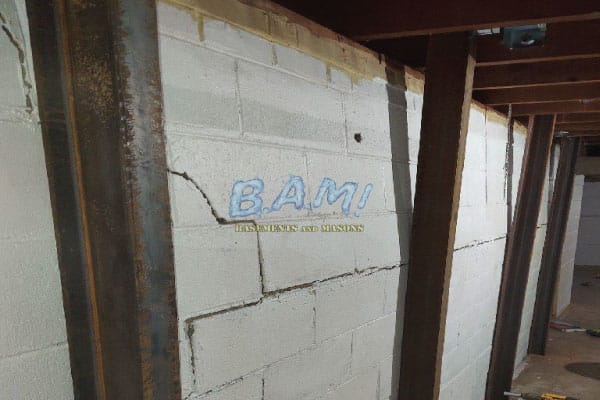Best Basement Waterproofing for Beginners
Table of ContentsSome Known Facts About Best Basement Waterproofing.The Best Strategy To Use For Best Basement WaterproofingThe Best Basement Waterproofing StatementsOur Best Basement Waterproofing PDFs3 Simple Techniques For Best Basement Waterproofing
AdvantaClean's trained specialists and specialists will certainly situate the water resource. If wall or slab fractures are existing, we will certainly infuse polyurethane and epoxies right into the splits and secure the concession, protecting against further moisture from entering.
If there's condensation on the outside of the foil, you have high moisture in your basement. If the foil has condensation on the inside surface (next to the wall), the dirt around your home might be normally damp from a high water table or inadequate dirt water drainage.
You can waterproof simply your indoor walls, which might address the problem. Once they dry, they adhere completely to concrete and stonework wall surfaces.
7 Simple Techniques For Best Basement Waterproofing
Concrete water-proof finishes can't be used to formerly repainted surfaces; check the tag. Recognized as densifiers, they are suitable only for walls that have not been repainted or secured.
Yet you clean, roll, or spray it on far more thickly one gallon covers simply 75 square feet, not the 300 square feet regular with standard paint. Water resistant paint is fine for DIY application. You can apply it over repainted surface areas, and paint over it once it's healed (one gallon expenses $37).
It can set you back $10,000 to $15,000, relying on the job needed. Exterior waterproofing entails digging deep into all around your home to the complete depth of the foundation wall surfaces, then installing a water-proof layer or membrane layer topped by water drainage panels. The panels supply an easy course for water to stream down to an external French drain at the end of your structure.
A cellar without waterproofing is kind of like that. Your basement doesn't desire to go through a downpour without appropriate defense just as much as you don't desire to.
The 6-Second Trick For Best Basement Waterproofing
However if you've done your research study, you would certainly understand his explanation there are 2 kinds of waterproofing: inside and outside. It can get confusing what they both mean, which one's a better investment, and what will really keep the water out. Don't worry, we created this blog to easily define both approaches for you and discuss the benefits and drawbacks of each.
Outside waterproofing is a waterproofing approach that entails securing your home from the exterior. It's type of like a moat around a castle. It involves excavating a trench around your entire home to the foundation (about 8 to 10 feet down). The foundation wall surfaces are after that cleaned up, sealed, and covered with a water resistant membrane or sealant.
The Facts About Best Basement Waterproofing Uncovered
It's a more engaged procedure that requires digging up your backyard, which is expensive and lengthy. Outside waterproofing entails eliminating everything surrounding your home, consisting of patios, driveways, pathways, landscape design, air conditioning systems, decks, and so on. If any of the work was done improperly and water is still entering your cellar, there isn't much you can do to deal with or fix it.
Inside cellar waterproofing entails waterproofing from the inside. Any kind of water that leaks right into find your cellar is redirected prior to it touches your floor. It's kind of like wearing a raincoat under your clothing. It includes 2 things: a water drain track and a sump pump. It functions by securing the within of your cellar walls and floors so water that tries to get in is transported out via a sump pump.
It's an efficient method to waterproof your basement - Best Basement Waterproofing. The disadvantage of indoor basement waterproofing mostly concerns the installation process. This technique calls for saved items, furniture, and built-in shelving or cupboards to be relocated from touching the cellar wall surfaces. And during installation, your basement can't be utilized. The biggest difference between both methods is this: Exterior waterproofing is a preventative remedy and indoor waterproofing is a rehabilitative service.
An Unbiased View of Best Basement Waterproofing
In final thought, exterior and interior cellar waterproofing are both reliable techniques of safeguarding your home from water damage. Outside waterproofing produces a barrier that prevents water see here now from entering your home, while indoor waterproofing redirects water that does enter your home. And it's essential to keep in mind that outside waterproofing is a costly and turbulent setup process when contrasted to indoor waterproofing.
Whichever technique you select, make sure you choose a reliable and reliable professional for the work. If you have any type of inquiries about cellar waterproofing, please reach out to us.
You can submit our kind here, begin a conversation in the bottom right-hand edge, or call us at 1-800-827-0702.